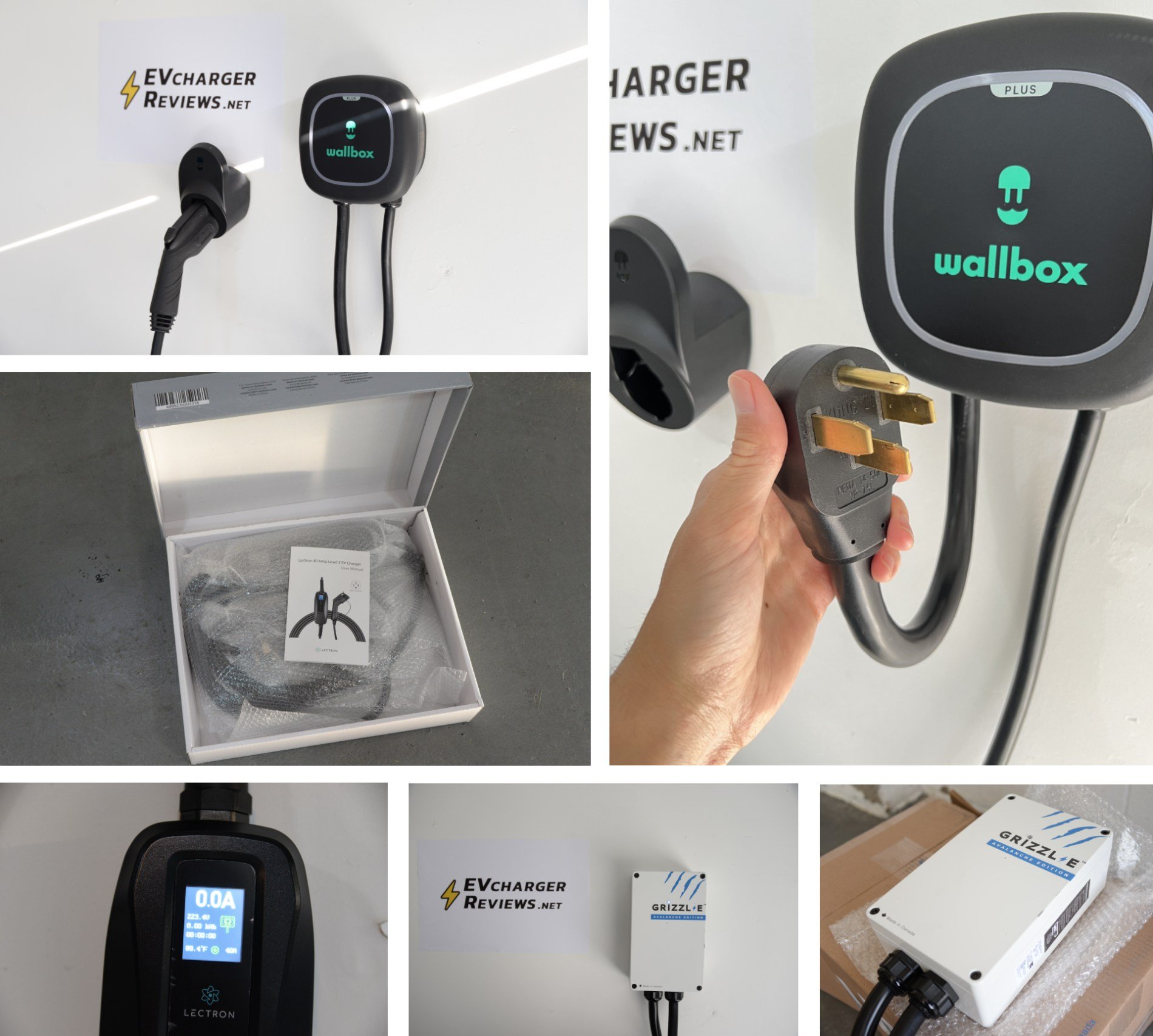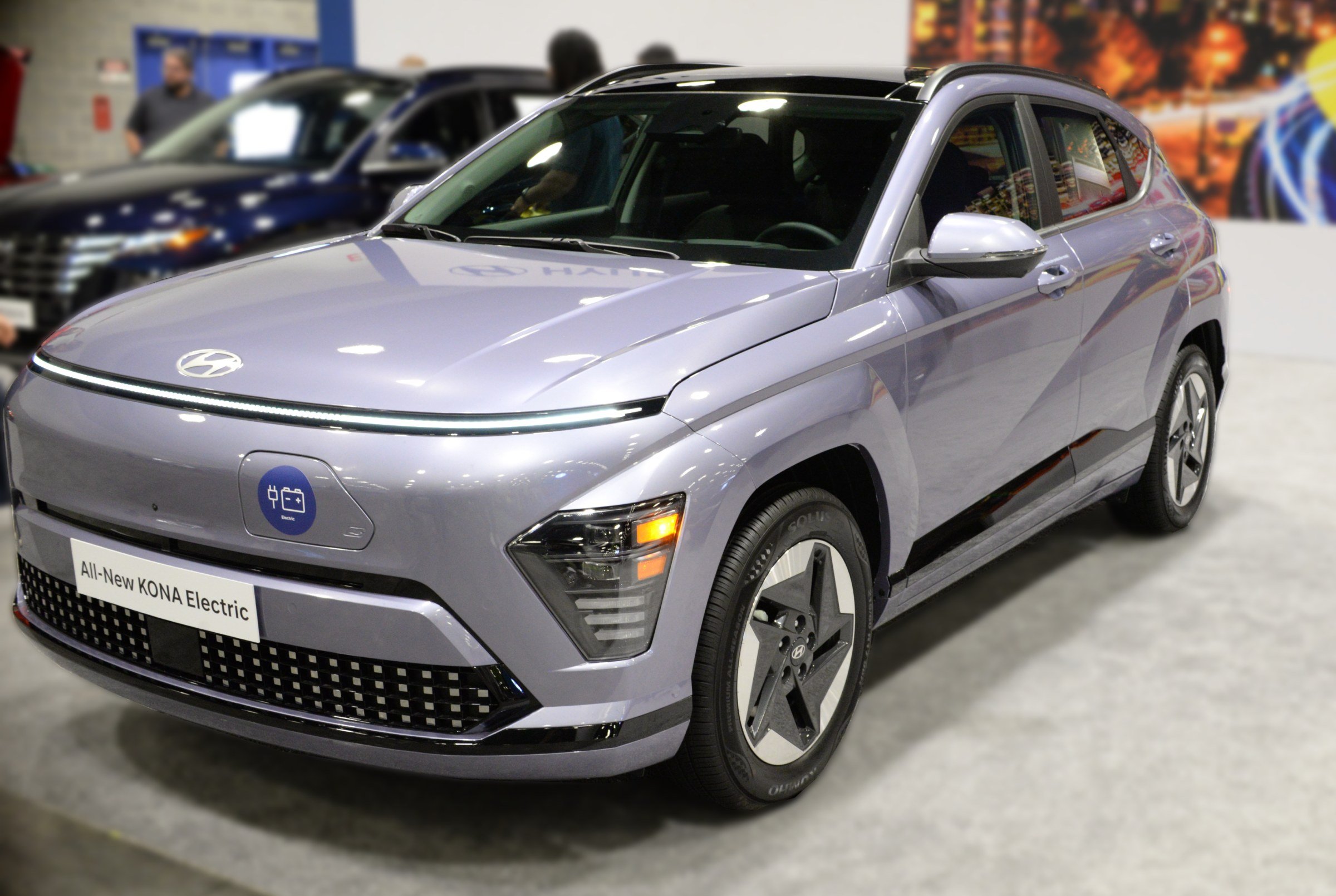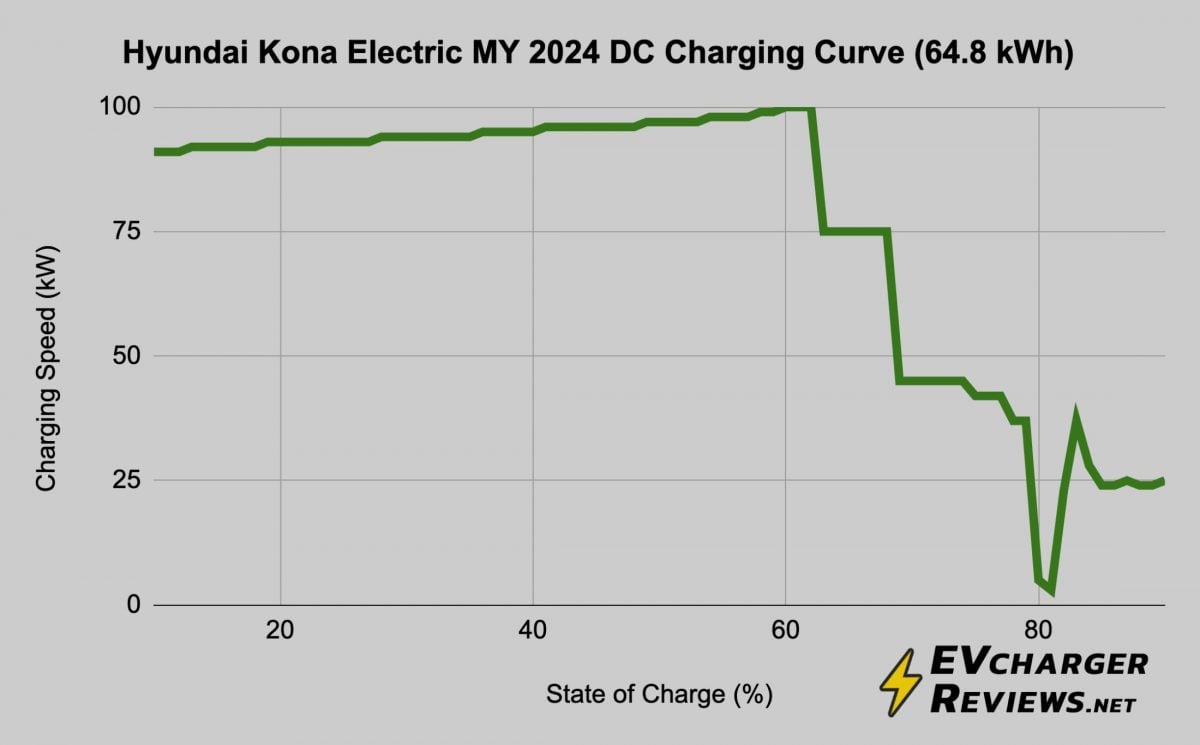EVchargerReviews is supported by our readers. We may earn commissions from links on this page. Why trust us?
Best Home EV Chargers for Hyundai Kona Electric
The Kona EV is a practical and affordable compact electric SUV from Hyundai. Introduced in 2019, and priced from the mid-$30k, the Kona Electric is attainable for the average new car buyer.
For the 2024 model year, Hyundai updated the Kona EV with slightly larger 48.6 kWh and 64.8 kWh battery options. The larger battery Kona now has an EPA estimated range of 260 miles, two more miles than the previous model. For charging, the Kona Electric uses a common J1772 / CCS combo connector.
The MY 2024 model is a big upgrade for charging at home. The new car can accept 10.8 kW versus 7.2 kW of the previous model. With a 40 amp home charging setup, you can typically expect to recharge the Kona EV in about 8 hours or less. Below are our recommended products for charging the Kona EV at home.
Why Trust US? We have hands-on testing experience with the most popular EV charging products.
Kona Electric Charging Fast Facts
| EV Charging Connector | J1772 / CCS |
| Battery Capacity | 48.6 – 64.8 kWh |
| Level 2 Charging Power | 10.2 kW |
| Level 2 Max Amps | 42 A |
| Level 2 [20-80%] Charge Time | 4 Hours |
| Level 3 Peak Power | 100 kW |
Autel MaxiCharger AC Lite (40 or 50 Amp)
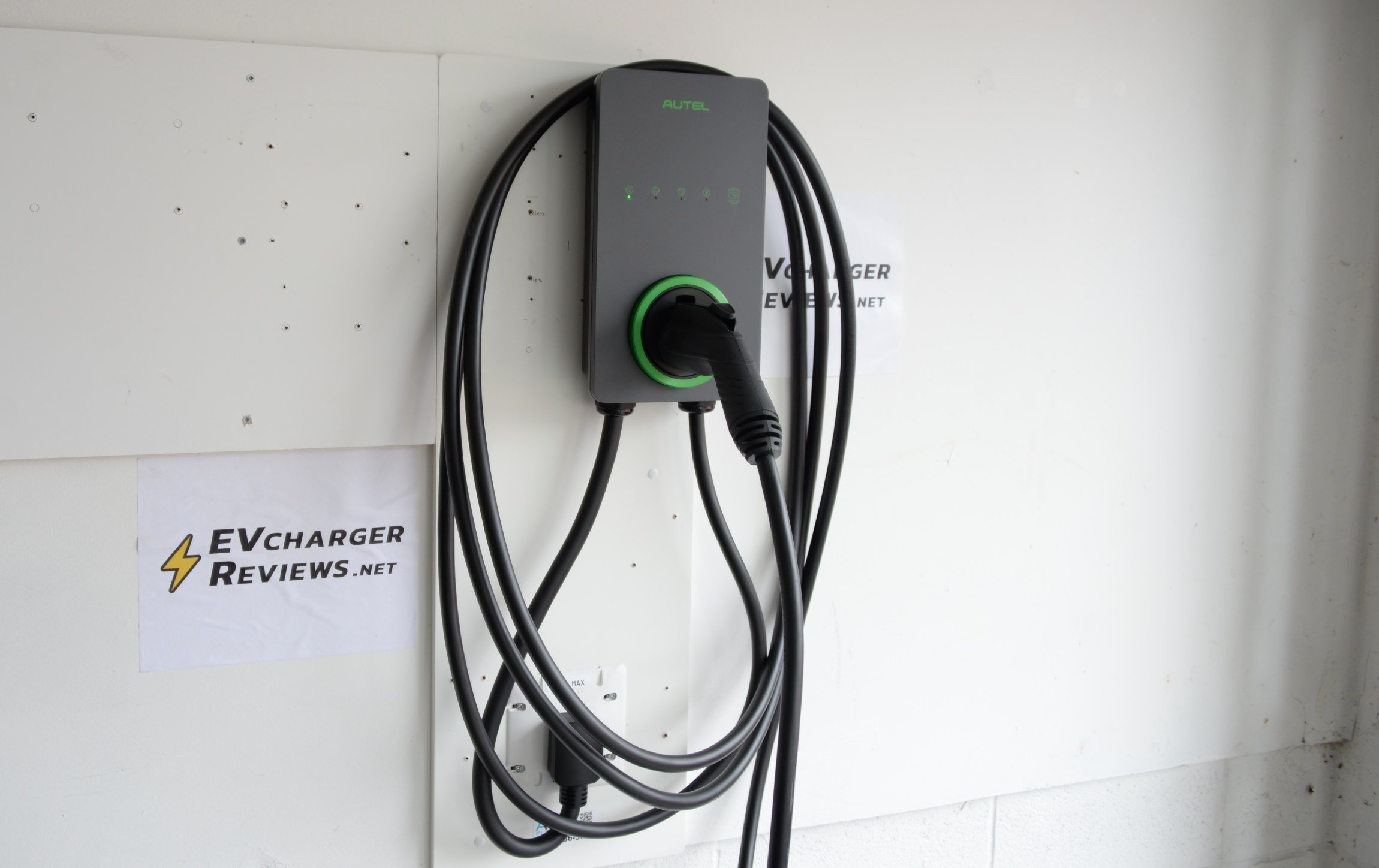
Autel’s latest AC Lite lineup of Level 2 chargers offers the same great performance as their Elite charging stations in a less expensive package. This charging station offers a 25-foot-long cord and a great J1772 connector that is compatible with the Kona EV. This product is available in a 40-amp version with a NEMA 14-50 input cord, or a 50-amp hardwired version. Both are adequate for charging the Kona EV.
Autel has one of the best apps on the market among smart EV charging stations, allowing drivers to monitor energy costs and fine-tune scheduling. Our only reservations were about the cord getting a bit stiff during cold weather, and the holster design makes the cord stick out a little more than optimal.
Specs
- Amperage: Up to 50 Amps
- EV Connector: J1772
- Home Connection: NEMA 14-50, or hardwire
- Cord Length: 25 feet
- Input Cord: 31 inch
- Cord Thickness: 17.3 mm
- Cord Gauge: AWG 10
- Weatherproofing:
NEMA 4 - Networking: Wi-Fi + BT
- App Control: Yes
- Warranty: 3 years
Pros
- Great Autel app with lots of detailed info
- 3-year warranty
- Long cables
- RFID reader
Cons
- Cable can get hard in cold weather
- The holster design makes the cable stick out
FLO Home X5 (30 Amp)
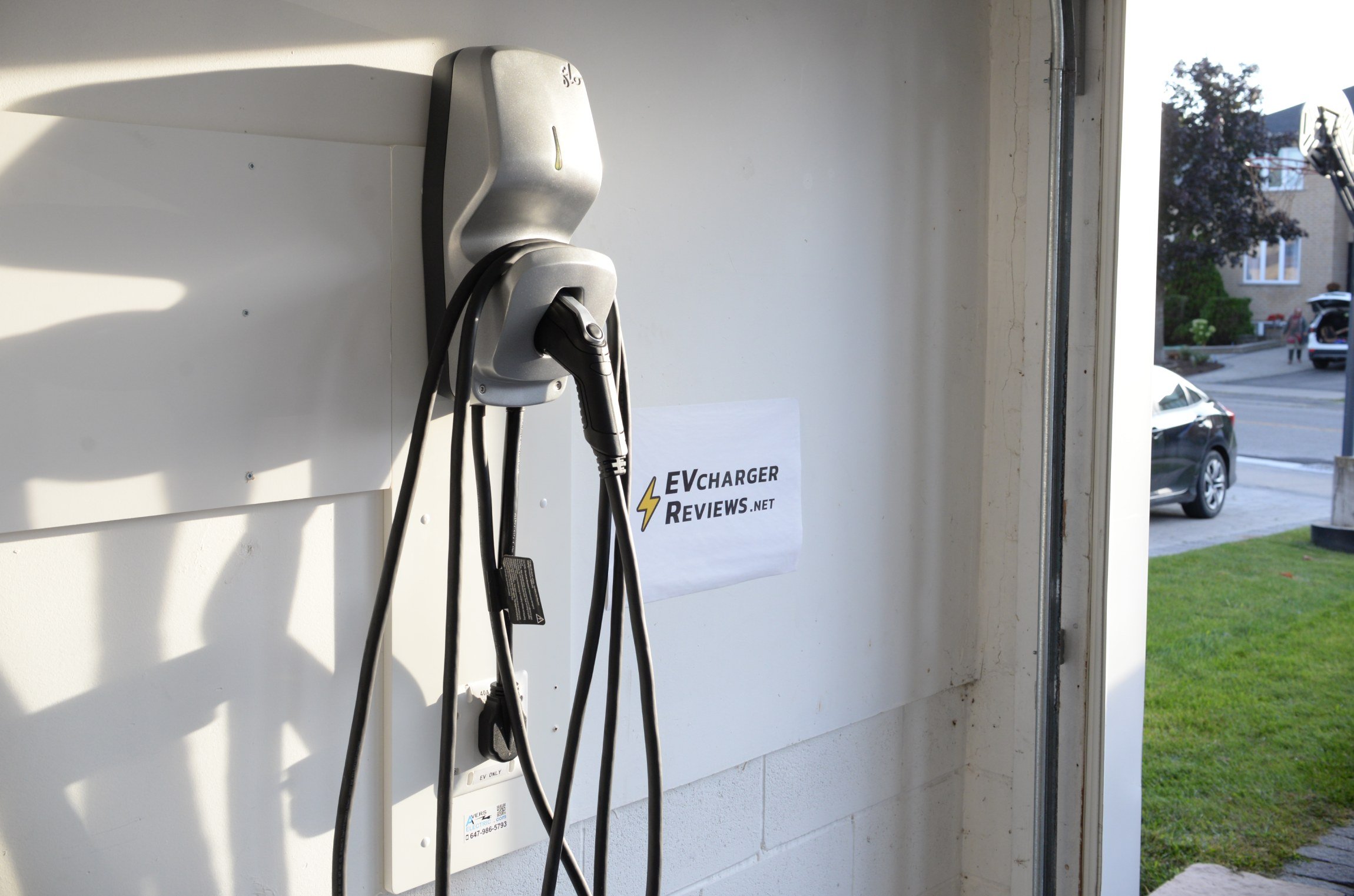
Drivers who live in extreme climates; very cold places, very hot plates, or locations with salt in the environment would appreciate the FLO Home X5. While not the fastest charging product, at 30 amps, the enclosure and cord materials are the gold standard for outdoor performance. The case is fully made of high-grade aluminum, with a gasketted opening to withstand corrosion. The cord and J1772 connector too, are functional and compliant in extremely cold weather.
The X5 connects to the Internet over Powerline networking with an included adapter, and pairs with FLO’s excellent app. At 30 amps, expect the Kona EV to charge from 0 to 100% in less than 9 hours.
Specs
- Amperage: Up to 30 amps
- EV Connector: J1772
- Home Connection: Hardwire
- Cord Length: 25 feet
- Cord Thickness: 17 mm
- Weatherproofing:
NEMA 4X - Networking: Powerline
- App Control: Yes
- Warranty: 5 years
Pros
- Extremely durable
- Excellent cord materials
- Reliable networking
- 5-year warranty
- Advanced scheduling features
- Good cord management
Cons
- No outlet option, must be hardwired professionally
- The app is well done but does not track home charging costs.
- 30 amps is on the lower end
Grizzl-E Level 2 EV Charger (40 Amp)
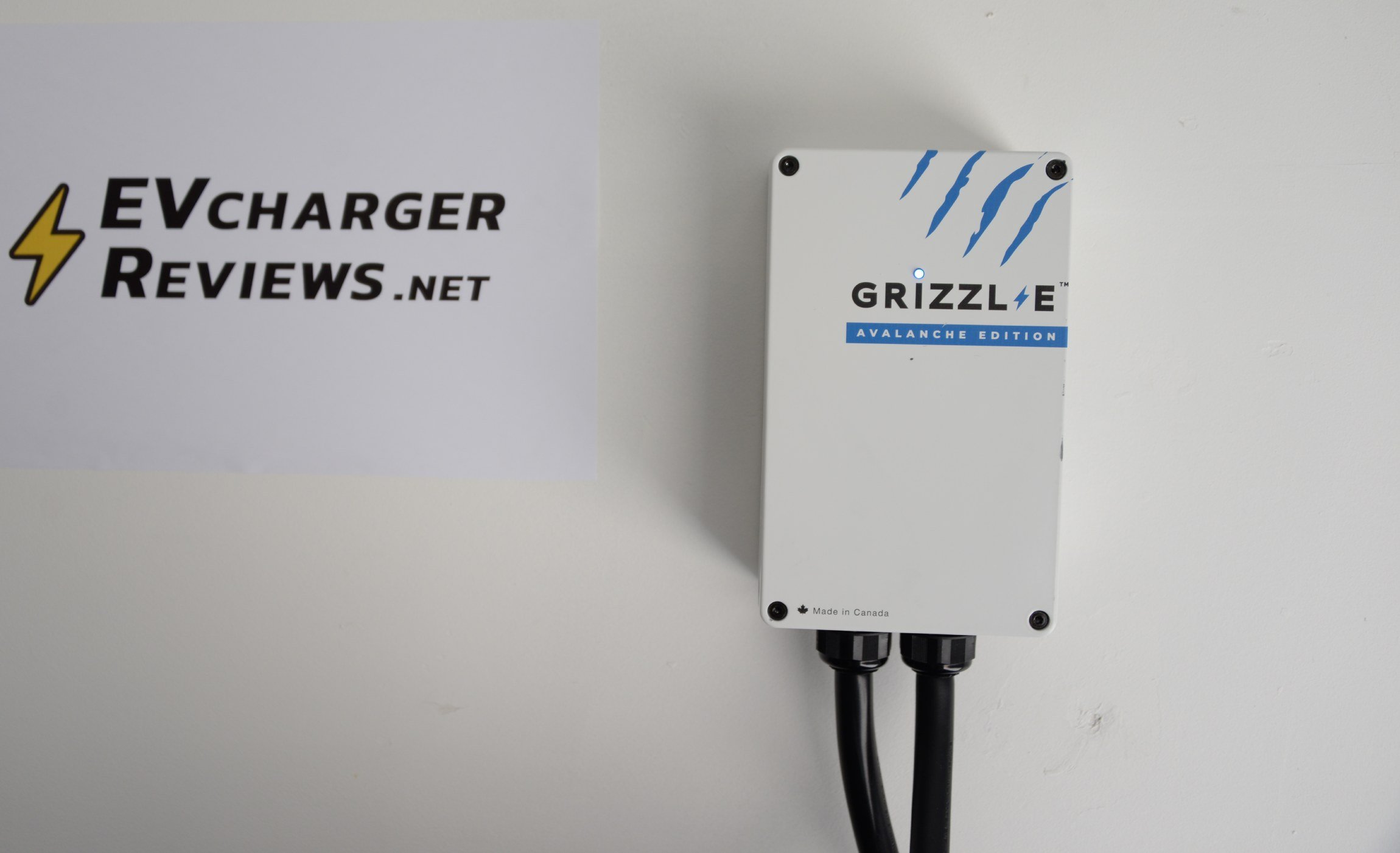
If you’re looking for a non-networked, simple home charging station that is plug-and-play, the Grizzl-E is a good choice. It may not have a bespoke design, but the enclosure is functional and is water and air-tight. It has got a NEMA 4 rating, suitable for outdoor installation.
There isn’t any LCD display or anything you don’t need. Just a simple LED indicator on the front to tell you what the station is doing. The cord is 24 feet long and handles cold weather pretty well. The Grizzl-E tops out at 40 amps, but it is configurable to lower modes using physical dip switches inside.
The Grizzl-E is often on sale and can be purchased between $350-400, a very compelling price for a durable charging station.
Specs
- Amperage: Up to 40 amps
- EV Connector: J1772
- Home Connection: NEMA 14-50, or hardwire
- Cord Length: 24 feet
- Weatherproofing:
NEMA 4 - Networking: No
- App Control: No
- Warranty: 3 years
Pros
- Durable construction
- Heavy-duty charging cable, suitable for extreme climates
- Value
Cons
- No smart features or app control
- Plastic external cord holster
Lectron 240V (40 Amp)
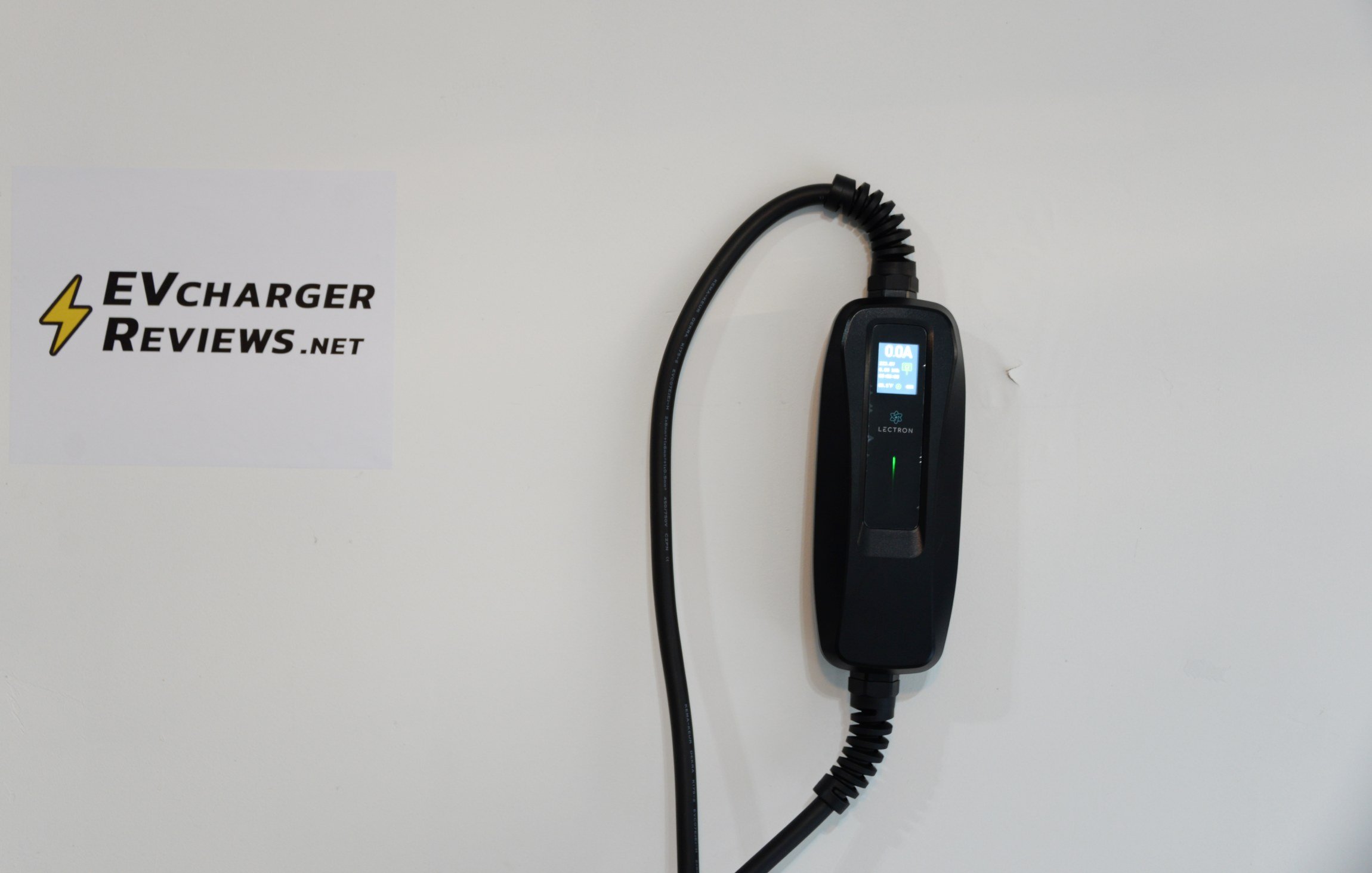
Lectron has been around the EV charging space for some time, but this is one of their more compelling products. If you’re looking for a portable EV charging cord, the Lectron 240-volt is a good option for the price. It can reach a peak of 40 amps (9.6 kW) while connected to a NEMA 14-50 outlet and has a helpful color LCD display with charging session metrics.
This is a good travel-friendly option, but when pumping 40 amps through such a small plastic enclosure, it does get pretty warm. Not to the point that is unsafe, but we’re slightly concerned about long-term longevity. (The warrant is also just one year) I’d suggest charging at 30 amps or less day-to-day, and stepping up to 40 amps when needed.
Specs
- Amperage: Up to 40 amps
- EV Connector: J1772
- Home Connection: NEMA 14-50
- Cord Length: 18 feet
- Weatherproofing:
IP66 - Networking: No
- App Control: No
- Warranty: 1 year
Pros
- Great power output for a budget charger
- Inexpensive
- LCD Display
Cons
- Gets warm at 40 amps
- Short warranty
How did we arrive at these choices? Here are all of the products we tested.
Frequently Asked Questions about charging the Kona Electric
How much does it cost to charge a Hyundai Kona Electric at home?
Typically, it is between $7 and $10 depending on your electricity rates. For example, with a rate of 13 cents per kW and assuming 95% charging efficiency, it would cost $8.75 to fully recharge the 64 kWh battery of the Kona EV at home. Given the 260-mile range, the cost per mile works out to just 3.4 cents.
What kind of charging adapter does the Kona EV need?
Standard J1772 connector in North America, like the majority of other new EVs.
What is the range of the Hyundai Kona EV?
The EPA rated the range of the Kona Electric to be 260 miles, using the 64.8 kWh battery. The smaller 48.6 kWh batter is good for about 200 miles in total.
Is the Kona EV available in AWD?
No, there is only one drivetrain choice, a 201-horsepower front axle motor. Hyundai offers the Ioniq 5 EV with an AWD dual-motor option. The KIA EV6 and EV9 are also SUV alternative options with all wheel drive.
How many amps can Kona EV take in for charging?
Up to 42 amps on Level 2 charging at home.
What is the battery warranty for Hyundai Kona Electric?
8 years /100,000 Miles
Should I charge my Kona EV to 100%?
Yes, you can. But avoid charging to 100% frequently. Lithium-ion chemistry batteries age and degrade quicker if they spend prolonged amounts of time at a very low or very high state of charge. Most manufacturers suggest charging to 80 or 90% on a daily basis and only charging to 100% before going on a longer trip when you need an extended range.
Where is the charging plug located on the Kona EV?
On the front of the car, slightly off-center toward the driver’s side. This is a very convenient placement for parking front-in towards a charger.
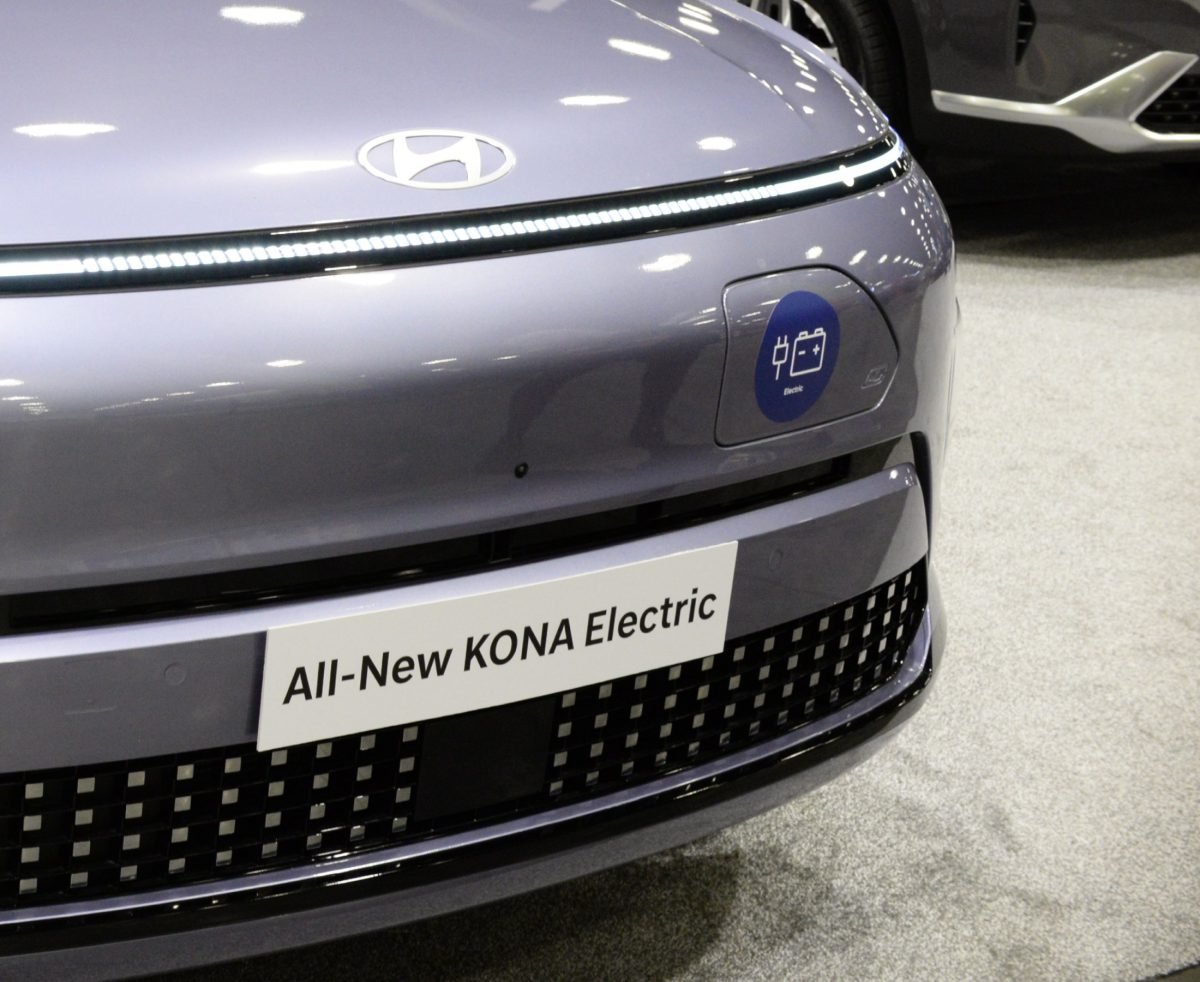
How fast can the Kona Electric charge on public Level 3 chargers?
The maximum charging rate in optimal conditions is 100 kW. According to the charging curve, it will take approximately 47 minutes to charge a Kona Electric from 10% to 80% in optimal conditions.
Can you charge a Hyundai Kona Electric at a Tesla Superchager?
Hyundai EVs will be able to charge at all Supercharger locations later in 2024 or in 2025 with an adapter. For now, only a limited number of Supercharger locations are available to non-Teslas. Check the Tesla app for your local availability.
How does EVchargerReviews.net come up with product recommendations? We get the most popular charging stations into our garage and test them extensively for a minimum of two weeks.
